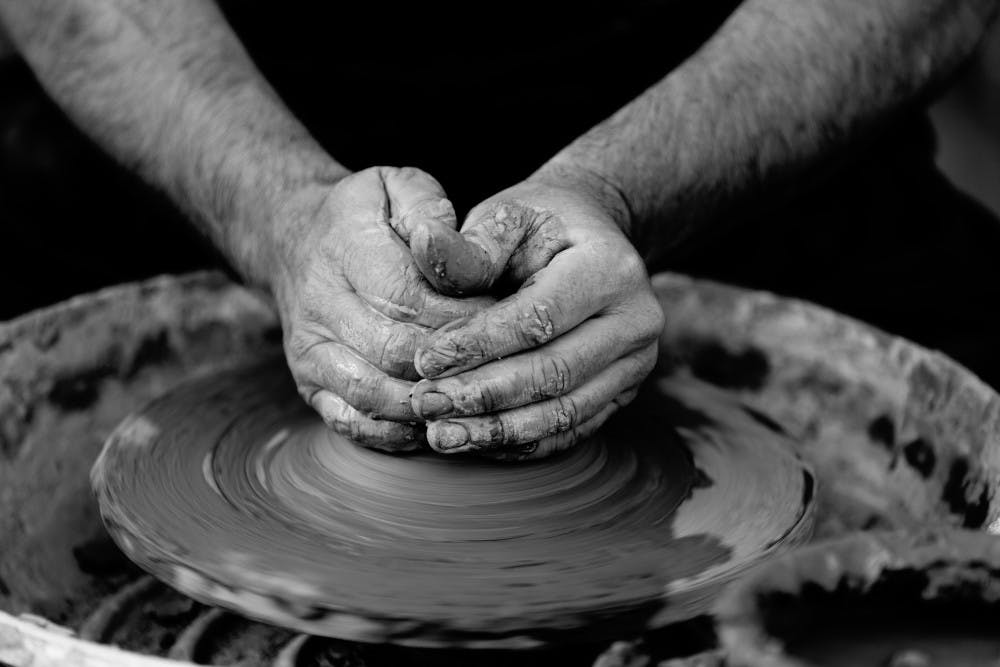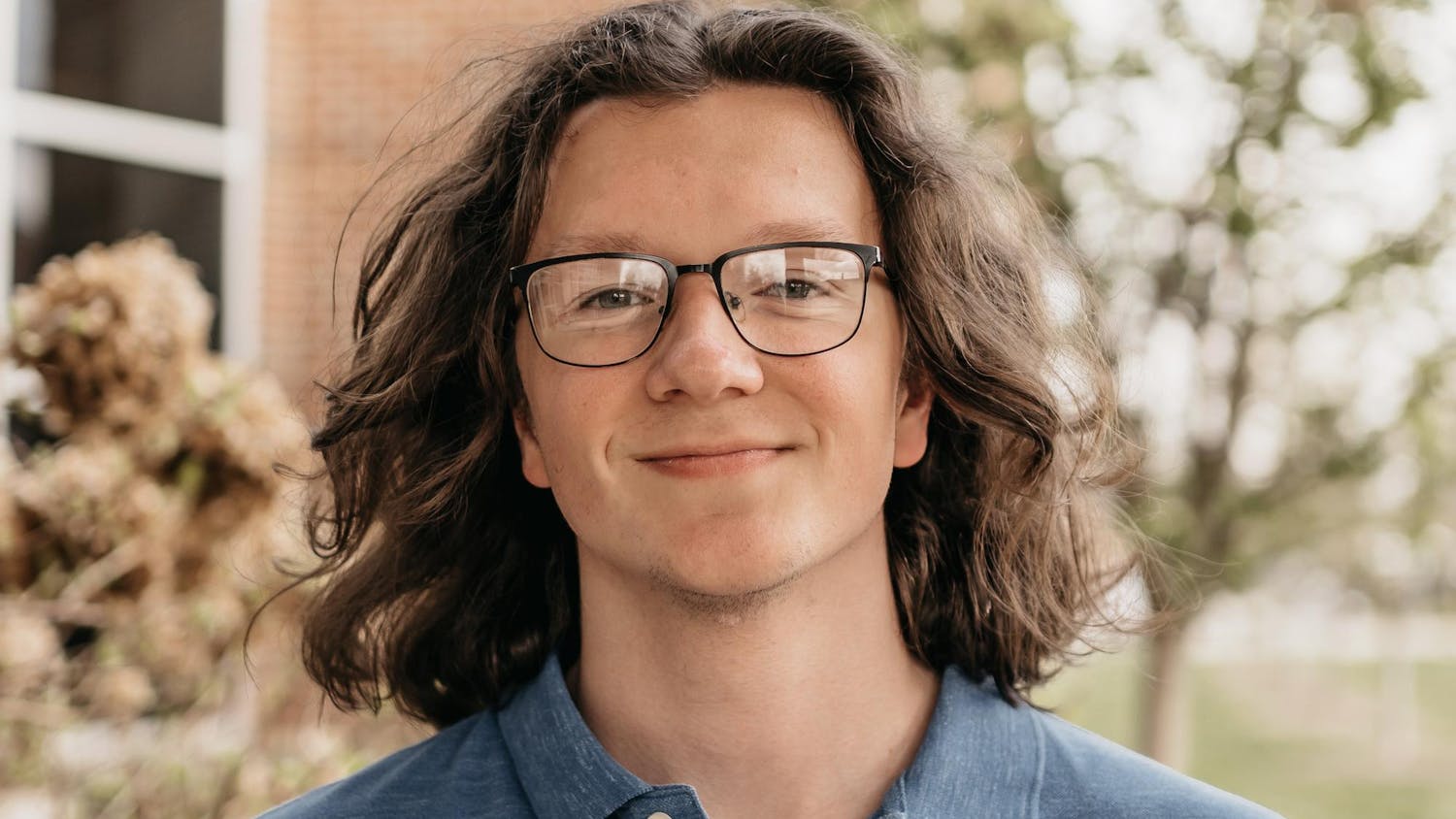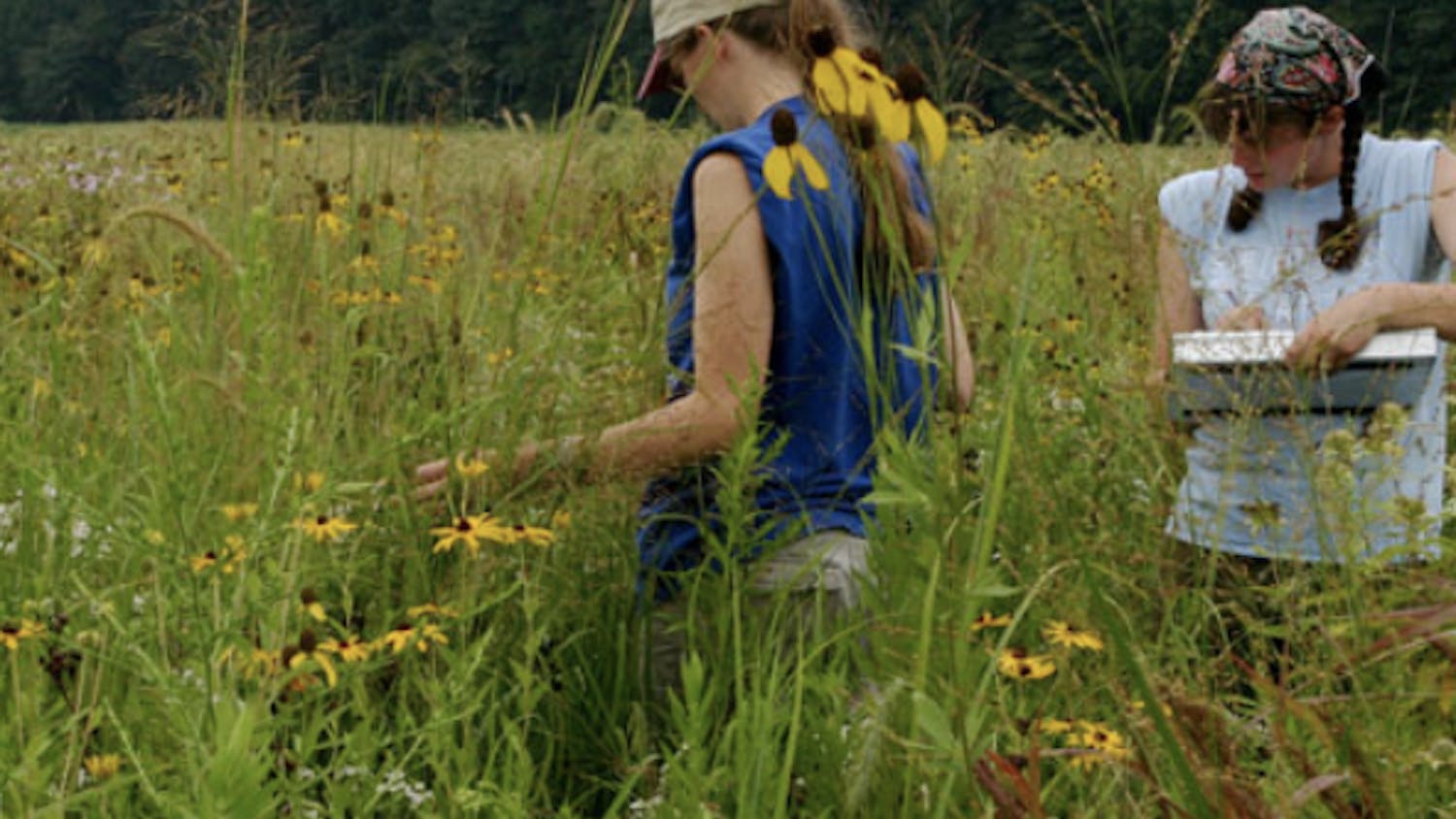By Grace Hooley | Echo
Worn craftsman hands are working through a lump of clay. At first, they harshly move and prod the 12-pound mass as it spins on the wheel. Though soon enough, the hands soften as they begin more intricate designs. Eventually, a wonderful clay creation is formed.
Beginning Sept. 1 and ending Oct. 20, clay works by Susan Nace (2D studio adjunct professor), John Reishus (art adjunct professor) and Martin Price ('76 alumni) will be presented in the Metcalf gallery. The opening reception for this "Clay and Kindred Spirits" exhibit is Friday, Sept. 1, at 6 p.m. where Reishus will give a brief talk, Price will provide music and refreshments will be available.
This gallery is celebrating the process. As Reishus or Price is finishing his clay pot, Nace might just be starting hers. In the same way that each person in life goes through different processes at different speeds, these three artists present their work in hopes of inspiring thought about the time and energy it takes to do something. This tangible art has something to offer as these three friends and artists use clay as a means of showing how God has made us, and how we now create because of that.
"I think all three of us are very much about the process," Nace said. "The whole aspect of making, of building, is critical to who we are, and I think that because of the medium we all use and the variables that can change, sometimes you see and learn more about yourself when the piece is done. Sometimes when you step back from life you can see the whole picture. And I think pot-making helps me do that," Nace said.
Working with clay has some unpredictability involved. When the formed creation is placed into the kiln (a furnace for firing pottery), unexpected results can take place, depending on the glaze and way that the piece was made. Each artist tried different styles of firing, designing and decorating their pottery.
Terra Sigillata is a slip that is placed to the piece, polished and fired. Exposed areas are covered in paper and burned. When the temperature dies down, the piece is taken out to sit and "soft smoke" the surface.
Raku is when a piece is fired at a low temperature (1666-1800 degrees Fahrenheit), and while it's still hot, it's moved to a closed container with materials like paper or sawdust in the container that cause a reaction, making crackle designs on the pottery.
Horsehair Raku is a way of decorating the pottery by applying horsehair to the heated piece. This creates smoke-looking patterns and trails on the surface that remain after the product is cooled.
These three processes can change a piece completely from what the artists expected, and that is also something that Nace, Reishus and Price want to portray within the gallery. They want to show that the process isn't always what you expect, and you can be changed when it ends.
"That (the uncertainty) is the part of the process that kind of unites all three of us," Nace said. "We like that you have a little bit of control, but there's always that surprise completing the work better than you could have imagined. And there are some pieces that end up sacrificed to the process, but I think we all gravitate in part to the process. And it's immediate, and you're present. And you're taking part in it as you're putting pieces into the kiln, pushing a button and letting them just be. I do (enjoy the uncertainty) because there's something about it, about the contrast between the time you spend methodically building precisely what you have control over contrasted with that that you don't have as much control over," Nace said.
Processes tell a story. They speak of a journey that one embarks on in hopes of being more complete by the end. As these artists worked and molded their pieces, they felt that it was where the past met the present and a story was born. Their very thoughts and hopes were molding as well as their pieces.
Throughout the process, each of these artists has been learning, experimenting and innovating their designs. Reishus believes that it might take ten minutes to make a piece of pottery, but there is ten years of experience behind those ten minutes.
"It is a cumulative adventure," Reishus said. "You're constantly learning. Even things I learned 30 years ago are still relevant. You just keep building that body of knowledge that you use when you're making things. And it's really true for everything, but on display specifically with our pots," Reishus said.
Both Reishus and Nace hope that viewers would see the beauty in the creation process. Reishus enjoys connecting what he makes to how God made us. He claims that making pottery is the closest he can come to making something from nothing.
Price hopes that viewers see the variety in the pieces and how they are made. He enjoys working on large pieces, but he thinks that the diversity of the clay art is something that viewers will notice and enjoy.
"I would hope that they would look at the piece and understand part of the process, but also acknowledge the history of where all these pieces came from. Everything I make is from what I made before and where I was before. You can't deny your past and your experiences and your feelings because they're all a part of your process. They're a part of you," Nace said.





